As a golfer, you are constantly working on your game. The goal is to always get better from one round to the next. Your constant practice and effort is an ongoing battle. And like most golfers, you probably feel that some days you make huge progress, and on others, it’s like you’ve never touched a club. The battle never ends.
There are different schools of thought as to where you should spend most of your time practicing. Is it the driving range; is it the putting green; the gym? For some it might be the couch in the sports psychologist’s office. But there is one thing that every person on this planet would agree prevents you from being a better golfer; and that is getting injured.
Below, I’m going to give you six ways you can avoid getting hurt, so you can spend more time on the course and not the couch.
HOW TO NOT GET HURT
I wish it was as simple as just putting together a list of “do’s and don’ts,” but as we all know, injuries are usually some sort of a freak occurrence that catches us off guard with no warning and then “BAM!”; something tears, something pops, or something is swollen beyond recognition. This is all too familiar to most of us guys over the age of 30. No longer are we bullet proof like we thought we were in college.
The key to fighting the unexpectedness of potential injury lies in our ability to be proactive and prepared for the worst. While the terms “game improvement” and “sports performance” definitely apply in the golf fitness world, sometimes we have to first look at where we are, what our goals are, and what is most important.
Be honest with yourself, are you gonna benefit more from trying to gain 50 yards in your drive (and honestly, is that realistic for you?) or would it be better to strengthen your rotator cuff properly so you don’t tear it when trying to punch a ball out of the deep rough?
Will you really benefit from throwing a medicine ball 100 times in your workout, or are you better off learning how to do a bodyweight squat through full range of motion so your ankles, knees, hips, and back work properly and become more efficient at stabilizing your body during your swing?
I know the following isn’t an end all be all list for the perfect injury prevention program, but it’s a start. If you use these guidelines going forward, you’ll at least enter into a fitness program and your golf game with more awareness of your body and hopefully less chance of being sidelined.
1. Prepare Yourself for What’s to Come
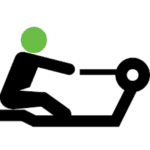
Before you start lifting or hitting drivers, it’s important to get you body moving and prepare yourself for the activity to come. Too many times I see guys in the gym that jump right into their workout without doing any kind of warm-up sets or dynamic movement stretches to get the muscles and the brain ready for the stress they are about to undergo.
A quick and dirty guideline for warming up is this: before any kind of physical or sports related activity, you should warm up with dynamic movements that take your body through motions that are similar to the activity you are about to do. Save the long drawn out stretching for afterward.
2. Start Light
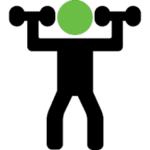
This refers to your warm-up, but also should be your philosophy when entering a new program or new exercise. I am all for golfers lifting heavy weights, so don’t confuse this with me telling you not to challenge yourself.
What I am encouraging here is that you first make sure you can handle a movement or exercise with perfect form. If not, adjustments need to be made or you may need some assistance from a professional to correct some poor movement patterns. Once you know you are good to go and can handle the movement, then I say “load it up.” A stronger golfer is a better golfer in my opinion.
Access your 4- Part Video Series “Get Off The Golf Fitness Roller Coaster” now to quickly gain an edge on the course
Learn the 5-step process today to start playing your best golf in the next 30 days
3. Your Body has More Than One Side
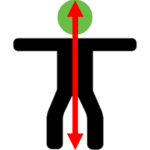
This seems like a fairly obvious one when it comes to working out because we perform a lot of exercises with either both hands or both feet at the same time. And I would assume you know that you should perform any unilateral exercise on both sides.
But do you do the same with your stretches and golf swings? At our gym, we encourage our golfers to swing the club at least 20 times a day in the non-dominant direction (ie. Left handed if they are a right handed golfer) to balance out all of the swings that they regularly take in the other direction. There are several benefits to doing this, which may be a topic for another post, but mainly just think balance.
After swinging thousands of times in one direction all of these years, we want to counteract any lack of flexibility and coordination issues that may have developed. (Side note: we also make our hockey players shoot pucks on the opposite side; it’s great for any rotational sport).
4. Work on Your Posture
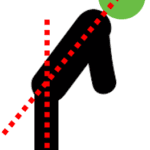
This one applies at all times. Not just in the gym, not just in your setup, but ALL THE TIME! Posture is not like your biceps where you can do some curls and get stronger. Posture is as much of an issue of habit as it is a strength related issue.
No matter how many exercises you do to work on your “core” and back muscles, if you do not make a conscious effort to stand and sit with good posture, odds are your golf posture is less than ideal.
Think about it. How much time do you spend at your desk, in your car and on your couch versus the time you spend focusing on good posture in your exercise and swing. If you’re not consciously working on good posture, you are unconsciously working on bad posture.
5. Don’t Just Push
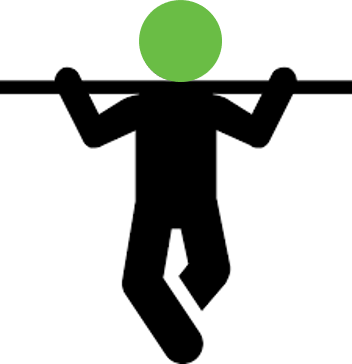
We mentioned balance above. This one is key. I often find that many guys prefer pushing exercises (bench press, triceps, shoulder press, squats) to pulling exercises (pullups, deadlifts, back extensions, reverse flyes). Get good at all of them.
Doing more pushing than pulling exercises will reinforce your poor postural habits, restrict your turn, prevent you from generating even close to the power that you could if you were strong in both directions. Find what you struggle with and do more of it.
6. Your Legs, Don’t Forget Your Legs

I apologize right now, because this topic is going to get old on this blog, but YOU HAVE TO WORK YOUR LEGS! If you want a strong back, powerful swing, plenty of stamina, more balance, and less injury, your legs need to become a huge focus in your workouts. We’ll expand more on this in many other posts, so just start now and we’ll get into more details as we go.
GETTING HURT SUCKS
There is nothing more detrimental to your game than an injury. And even though the social aspect of the game is a big reason as to why we go out there, let’s face it, if you can’t play, you want nothing to do with being around a bunch of guys talking about the round of golf you missed last weekend.
You are in it for the enjoyment of the competition, either with the other guys or just with yourself, but if you can’t play, you can’t compete. Start taking more of a proactive, strategic approach to your game and your fitness level by addressing the bullets above.
If you have any questions about any of these suggestions or if you have a completely unrelated question, just let me know in the comments section below.
And if you found this article helpful, please help your buddies out by sharing it on your favorite social networks!
Access your 4- Part Video Series “Get Off The Golf Fitness Roller Coaster” now to quickly gain an edge on the course
Learn the 5-step process today to start playing your best golf in the next 30 days

